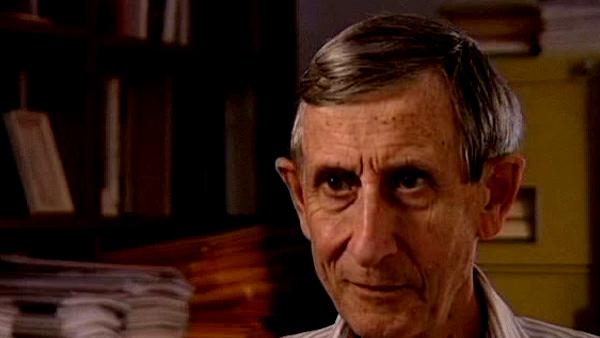NEXT STORY

The reasons for moving to Cornell University
RELATED STORIES

NEXT STORY

The reasons for moving to Cornell University
RELATED STORIES


|
Views | Duration | |
|---|---|---|---|
| 51. Studying quantum field theory | 2626 | 01:55 | |
| 52. The reasons for moving to Cornell University | 1 | 2220 | 02:36 |
| 53. Good fortune | 1733 | 01:56 | |
| 54. Introduction to the American way of life | 1976 | 00:55 | |
| 55. Community at the Rockefeller building | 1501 | 01:27 | |
| 56. Courses and people at Cornell | 2 | 1953 | 02:42 |
| 57. Work on the Lamb shift equation | 1884 | 03:01 | |
| 58. Richard Feynman and his work | 2 | 5985 | 05:42 |
| 59. Presenting the Lamb shift findings | 2274 | 00:57 | |
| 60. Introduction to strong interactions | 1731 | 00:56 |


Well, Kemmer gave two courses which were both excellent. One was nuclear physics and one was quantum field theory, and quantum field theory was at that time very much of a continental subject. It hadn't been done much in England, even less in America. It was essentially a German monopoly almost. I mean, it was invented by Heisenberg and Pauli and a few other people, Wigner, and it had all been developed more or less in Germany and Switzerland, and the classic book on the subject was Wentzel, Zur Quantentheorie der Wellenfelder, which was published in Vienna in the middle of the war and was completely inaccessible to anybody in England or America. So Kemmer had brought this book with him, or had a copy of it in Cambridge, and so he gave me that to read. And that was, of course, a tremendous advantage because that contained quantum field theory set out very clearly in a very orderly fashion, explaining just what was known and what was not known, and that was the tool that I needed, actually, for quantum electrodynamics. It had not been put together. There was Heitler's book which was very phenomenological, describing the calculations that had been done; and Wentzel's book which gave you the general mathematical framework very nicely, but the two had never really been combined. Anyhow, so I had those two things very fortuitously put together, and that was exactly the right preparation then for what I did in America.
Freeman Dyson (1923-2020), who was born in England, moved to Cornell University after graduating from Cambridge University with a BA in Mathematics. He subsequently became a professor and worked on nuclear reactors, solid state physics, ferromagnetism, astrophysics and biology. He published several books and, among other honours, was awarded the Heineman Prize and the Royal Society's Hughes Medal.
Title: Studying quantum field theory
Listeners: Sam Schweber
Silvan Sam Schweber is the Koret Professor of the History of Ideas and Professor of Physics at Brandeis University, and a Faculty Associate in the Department of the History of Science at Harvard University. He is the author of a history of the development of quantum electro mechanics, "QED and the men who made it", and has recently completed a biography of Hans Bethe and the history of nuclear weapons development, "In the Shadow of the Bomb: Oppenheimer, Bethe, and the Moral Responsibility of the Scientist" (Princeton University Press, 2000).
Tags: UK, USA, Germany, Switzerland, Zur Quantentheorie der Wellenfelder, Vienna, Cambridge University, Nicholas Kemmer, Werner Heisenberg, Wolfgang Pauli, Eugene Wigner, Gregor Wentzel
Duration: 1 minute, 56 seconds
Date story recorded: June 1998
Date story went live: 24 January 2008